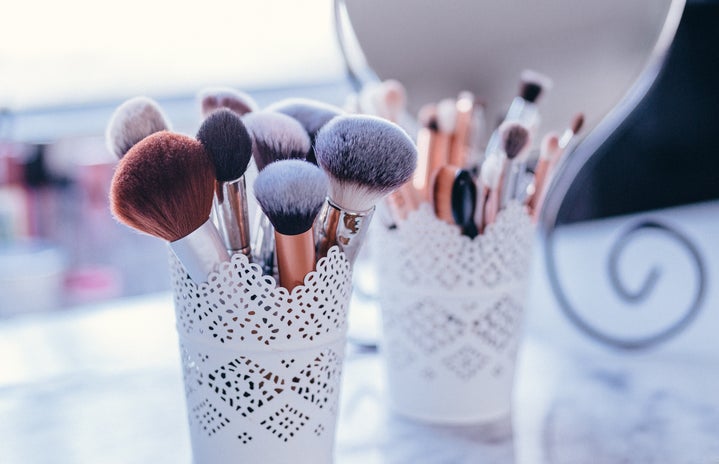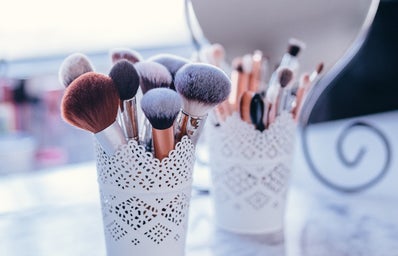The Cold Reality
Kristyna Martelli’s body lay lifeless on the sterile, cold operating table. Martelli just underwent her 100th elective cosmetic surgery, and in a dark turn of events, she died from complications due to a seizure during the surgery. Martelli began having cosmetic surgery at just 18 years old. In the span of four years, she had undergone one hundred cosmetic surgeries. The level as to which Martelli went to acquire the “enhanced” body she wanted was shocking. Martelli gained Internet fame due to her enhanced body gaining over 615,000 Instagram followers, who showered her with the attention she wanted – needed.
Our society is killing girls. Social media, pop culture, and film are drilling such an unrealistic body image into men and women’s heads of how women should look. It warps women into believing they are not good enough until this unachievable goal is met, so much so, that young girls are dying on the operating table from elective cosmetic surgery.
Social media, which has become this extensive multi-user interface, connecting millions of people worldwide, is creating an interesting dynamic. Social media is so intertwined with our daily routine. We wake up, make coffee, and check Facebook, Snapchat, and Instagram. We refresh the same four or five apps throughout the entire day. So, it comes as no surprise that what we see on social media has quite an impact on us. As media platforms change- from newspaper and magazines, to digital instant access in the palms of our hands- consumers are now able to rapidly digest information and messages faster than any generation before. With that being said, across the spectrum of apps we use daily, there is a steady and unbroken not-so subliminal messaging to women that they are insufficient and inadequate. Be it marketing tactics and business maneuvers, everything is telling women they are simply not good enough. From a young age, women have these ideals thrust in their face. Marketing strategies use social media to fuel this ever-present pressure on what women should look like.
The Warped New Beauty Standard
Models and celebrities flood social media pages appearing perfect: huge breasts, exaggeratedly plump lips, and perfectly sculpted hips and butt. It is as if our world denies that this new look is fake. There are men who swear to their graves that Kylie Jenner’s lips and breasts are real. I have heard some say puberty just hadn’t “hit” her yet, when pictures from just two years ago prove very different. This normalization of excessive plastic surgery is alarming and problematic. The Kardashian family is a wonderful example of how plastic surgery has helped market and popularize, create, and establish their overall brand. Let’s face it; the average woman does not have thousands of dollars to modify their body. Kylie Jenner is twenty years old, and she has had her lips, breasts, butt, hips, and nose done. From the speculation of plastic surgeons, Kylie has likely had fillers in her jawline, chin, cheeks, and forehead as well. Remember, the lip fillers also must be kept up with every three months to maintain the full and plump look. Base line pricing at $600 a single syringe, needing about two to three to achieve such a pout, her lips alone every three months costs around $1200 – $1800. It is expensive to look like Kylie Jenner. Men claim her as their ideal type, and women wish to look like her. But, it is not real. Without the available finances, it is unachievable. Social media is where men see Kylie’s sexy selfies, and then internally, men decide that is what they want their ideal mate to look like.
Let us talk about Instagram, one of the most popular apps today. To help paint a better picture for this piece, I will admit, I am a 24-year-old female, and my interests are fitness, food, and dogs. Oh and memes. Lots of memes. And yet, my own Explore Page on Instagram is littered with soft-core “fitness” porn. “Fitness” pages have turned into women wearing booty shorts, bending over as the camera zooms in on their butt, as they complete a half-repped squat.
Instead of informative training videos or bodybuilding competitors (which I aim to see), there are girls twisted in sexy poses, wearing minimal “workout gear”. I fail to see any actual fitness. All I see are fake breasts and seductive posing. I’m not even interested in these pages, yet they are all I see. Even when I click a post and select: “See fewer posts like this”, I can never seem to sift through all the fitness porn. The Explore Page is a curated mixture, an algorithm, of what Instagram thinks each user will be interested in. Each Explore Page will be different for each user, but it is based on what you like and profiles you spend the most time on. I can’t escape the bad fitness porn profiles. I’ve find myself smothered with messages telling me my breasts should be a certain size and shape, and that my body should have a sucked in waist with impossibly large, vivacious hips. I can’t escape it. No one can. Why do I have to search so hard to see real fitness profiles?
Women are told on every media platform that they are not enough- that their bodies and faces need to be altered to be beautiful. This fuels the warped beauty standards of today’s society. Social media specifically feeds into what is called “habitual body monitoring”. Women are constantly checking celebs, friends, and co-workers, without even realizing it, comparing lives, jobs, possessions, and of course, bodies. There used to be a time when I would smile and laugh in the moment to take a fun group picture, and now my brain is flooded with thoughts of, “How should I position my legs? How does my arm look? How fat am I going to look in this picture? Who is going to post this?” Why do you think the forced duck lip, sexy selfie is still a thing? Girls, from the time they are given their first cell phone, subliminally start thinking: must maintain sex appeal. It is engrained in girls’ minds.
Instagram Models
Women are constantly comparing themselves to one another, and are constantly comparing themselves to unachievable fake bodies perpetuated by celebrities, businesses, Hollywood, and the media. Men begin to compare women to Instagram Models. An Instagram Model is a new paradox of this generation. Urban Dictionary defines it as, “Girls on Instagram who Photoshop all of their pictures, wear pounds of makeup and have 250k followers. They claim they’re models.” These women are not actresses or celebrities by Hollywood measures, and our parents would not know who they were, but somehow they’re famous. Women see these perfect, flawless Instagram Models and think this is how they should look; they retract to the habitual body monitoring. This adds into the dissatisfaction with one’s self image. It is not a healthy standard. It leaves women again falling short to an unrealistic standard. Social media also makes our generation feel less connected and more depressed. If all you see are gorgeous people living luxurious lives, traveling from one country to the next in designer threads, you might consider your own life boring, pathetic, or inadequate. Instagram can create jealousy and insecurity. Women see their boyfriends liking Instagram Models’ pictures, following their pages, and then feel even more desperate to be like them and to look like them. It’s a vicious and unhealthy cycle. Why is it that the majority of men seem consumed with following these Instagram Models? Men are visual creatures. Instagram provides all day instant access to look at beautiful (yet fake) people in their perfectly, curated lives.
The Hollywood Effect
Women are teetering on an unfair scale in the matter of physical appearance in Hollywood. Female actresses are expected to look the part with flawless skin, petite frame, and fit the desired body type: thin, yet sexy. Think back to the early days of Hollywood with stars like Brigitte Bardot and Marilyn Monroe. This starkly contrasted famous comedians and actors of the 1950’s, like Charlie Chaplin, who was not classically handsome, yet had major roles in TV and film. Thankfully in recent years, there have been some breakout stars, like Melissa McCarthy, who do not have the archetypal slim figure. McCarthy untraditionally has a hefty figure and large, round face. Women that do not encompass the glittery, flawless Hollywood package are a rare commodity in showbiz. Hollywood still has a room for major improvements.
I was recently in a conversation with a guy who had just come home from the movies, and he had seen The Big Sick. He was venting about how he thought the movie was a let down. He proceeded to say he didn’t like the movie because the female lead was not “hot”. He actually stated that there were no women in the entire movie that were attractive. He jokingly said that Ray Romano was the best looking one in the cast. I gritted my teeth and asked him about the plot and if the movie was funny. I wondered to myself, why does attractiveness matter if the actress is doing a phenomenal job? Apparently men become upset if they have to stare an unattractive lead. After quick Googling, I found out the lead actress is Zoe Kazan. Kazan is a doe eyed, blonde beautiful woman.
I was perplexed at how she wasn’t good enough. Naturally, I then had to find out if any of the men in this movie were classically good looking. The lead male cast includes Kumail Nanjiani, a hilarious American-Pakistani, famous for his stand up comedy and Ray Romano. Romano is pushing sixty, and Nanjiani typically wouldn’t fall into the classically handsome actor category, like say, Chris Hemsworth. Which is fine! But why is it okay for men to be not-so-good looking, but not okay for the women? Shouldn’t my male friend be equally upset that the male leads are not classically good looking?
What Can We Do?
As a collective whole, what can our generation do to mitigate this? Social media is not going anywhere anytime soon. Therefore, first and foremost, realizing that the new beauty standard is unrealistic is important. Unplugging from the vortex and black hole that is Instagram is key. Unfollow the unauthentic profiles, and cleanse yourself from the habitual body monitoring. Secondly, awareness is key. Become aware and familiarize yourself with the counter movements. A movement dubbed as the Body Positive Movement challenges these unrealistic ideals. This movement shines through women posting real, unphotoshopped bodies under the hashtag #BodyPositiveMovement. Accepting your beauty in its natural way is refreshing. Changing your feed to women that inspire you is a game changer. Our generation needs to boycott marketing ploys that only stand for the sex sells business model, and instead take a stance for real beauty standards. It is time to eradicate the toxic warped beauty standards that social media has perpetuated.

